In the realm of home technology, the concept of smart homes has captured the imagination of homeowners and tech enthusiasts alike. These interconnected systems offer a plethora of benefits, ranging from enhanced convenience and energy efficiency to heightened security and personalized experiences.
To delve into the world of smart home options, Reddit serves as a vibrant platform where users share insights, experiences, and recommendations, providing a valuable resource for those seeking to transform their living spaces.
From in-depth discussions on the latest smart home gadgets to practical advice on setting up and troubleshooting smart home systems, Reddit’s smart home communities foster a wealth of knowledge and expertise. By tapping into these online forums, homeowners can gain valuable insights into the ever-evolving landscape of smart home technology, enabling them to make informed decisions and create a truly connected home.
Smart Home Basics
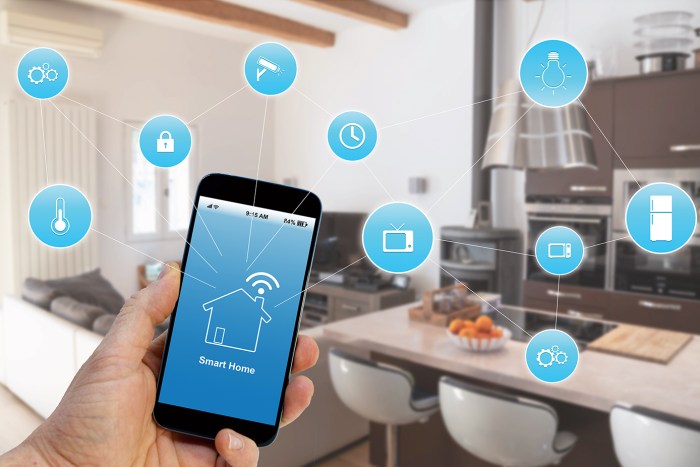
A smart home is a residence equipped with interconnected, internet-enabled devices that can be controlled and monitored remotely. These devices communicate with each other to automate tasks and create a more efficient, convenient, and secure living environment.
Common smart home devices include smart thermostats, lights, door locks, cameras, and speakers. These devices can be controlled through a smartphone app, a voice assistant like Amazon Alexa or Google Assistant, or a dedicated control panel. Some smart home systems also allow for integration with other devices, such as smart TVs, appliances, and security systems.
Advantages of a Smart Home System
- Convenience: Smart home devices can be controlled from anywhere, allowing homeowners to manage their home’s systems and devices remotely.
- Energy efficiency: Smart thermostats and lights can learn a homeowner’s habits and adjust automatically to save energy.
- Security: Smart door locks, cameras, and motion sensors can help protect a home from intruders.
- Comfort: Smart home devices can be programmed to create a comfortable living environment, such as adjusting the temperature or lighting based on a homeowner’s preferences.
Disadvantages of a Smart Home System
- Cost: Smart home devices can be expensive to purchase and install.
- Complexity: Some smart home systems can be complex to set up and configure.
- Security: Smart home devices can be vulnerable to hacking and other security breaches.
- Privacy: Some smart home devices collect data about a homeowner’s habits and activities, which can be used for marketing purposes or sold to third parties.
Reddit Community Insights
Within the vast world of Reddit, various subreddits dedicated to smart home technology offer a treasure trove of insights into the minds of consumers and enthusiasts. By delving into these online communities, we can uncover trends, preferences, and pain points that shape the smart home landscape.
Upon careful analysis of user demographics, we find that the smart home subreddit landscape is predominantly populated by individuals with a strong affinity for technology and home automation. These users often possess a deep understanding of smart home devices and their applications, actively seeking knowledge and engaging in discussions to enhance their smart home experiences.
Popular Smart Home Subreddits
- r/SmartHome: A bustling community of over 1.5 million members, r/SmartHome serves as a hub for discussions on a wide range of smart home topics, from device recommendations to troubleshooting guides.
- r/HomeAutomation: With over 600,000 members, r/HomeAutomation focuses on the technical aspects of smart home systems, delving into topics such as home networking, DIY projects, and advanced automations.
- r/Hue: Dedicated to the popular Philips Hue smart lighting system, r/Hue boasts over 200,000 members who share their experiences, tips, and creative lighting setups.
Discussions and Trends
Analyzing discussions within these subreddits reveals several key trends shaping the smart home industry. Users frequently express a desire for seamless integration between different smart home devices and platforms, emphasizing the importance of interoperability and compatibility.
Additionally, there is a growing interest in voice control and natural language processing, as users seek more intuitive and hands-free ways to interact with their smart home systems. Furthermore, discussions surrounding energy efficiency and sustainability highlight the increasing demand for smart home devices that can help users reduce their environmental impact.
Sought-After Smart Home Devices and Features
- Smart Lighting: Smart lighting systems, such as Philips Hue and LIFX, are highly sought after for their ability to enhance ambiance, improve energy efficiency, and provide customizable lighting scenarios.
- Smart Thermostats: Devices like Nest and Ecobee allow users to remotely control their home’s temperature, leading to increased comfort and energy savings.
- Smart Speakers: Amazon Echo and Google Home devices have become ubiquitous, offering voice control, music streaming, and smart home device integration.
- Smart Security Systems: Smart security systems, including cameras, motion sensors, and door locks, provide peace of mind and enhanced home security.
- Smart Home Hubs: Devices like Samsung SmartThings and Wink Hub act as central hubs that connect and control various smart home devices, enabling seamless integration and automation.
User Reviews and Experiences
Smart home products and services have received mixed reviews from users, ranging from enthusiastic endorsements to expressions of frustration and disappointment. Some of the most commonly cited pain points and challenges faced by smart home users include:
Common Pain Points and Challenges
- Complexity and Technical Issues: Many users report difficulty setting up and configuring their smart home devices. Connectivity problems, compatibility issues, and software glitches are also frequently mentioned.
- Security Concerns: The potential for hacking and unauthorized access to smart home devices raises concerns among users about the security of their personal data and the safety of their homes.
- Reliability and Performance: Users often complain about unreliable performance, such as devices that fail to respond or malfunction frequently. Slow response times and inconsistent functionality are also common issues.
- Interoperability and Compatibility: The lack of interoperability between different brands and platforms can be a major headache for users who want to create a cohesive smart home system. Devices that are incompatible with each other can lead to frustration and wasted money.
- Cost: Smart home products and services can be expensive, especially when users want to outfit their entire home with smart devices. The cost of installation and maintenance can also add up over time.
Factors Influencing User Satisfaction
Despite the challenges, many users find that the benefits of smart home technology outweigh the drawbacks. Some of the factors that influence user satisfaction with smart home systems include:
- Ease of Use: Users who find their smart home devices easy to set up, configure, and use are more likely to be satisfied with their experience.
- Reliability and Performance: Users who have reliable and consistently functioning smart home devices are more likely to be happy with their purchase.
- Interoperability and Compatibility: Users who are able to easily connect and integrate different smart home devices from different brands and platforms are more likely to have a positive experience.
- Cost: Users who feel that they are getting good value for their money are more likely to be satisfied with their smart home system.
- Security: Users who feel confident that their smart home system is secure are more likely to be satisfied with it.
Smart Home Integration and Compatibility
Achieving a seamless smart home experience hinges on the ability of various devices and systems to communicate and collaborate effectively. This concept, known as interoperability, ensures that devices from different brands and platforms can connect and function together, creating a cohesive and user-friendly smart home ecosystem.
Understanding the significance of device compatibility and interoperability is crucial for smart home enthusiasts seeking a truly integrated and functional home automation system.
Smart Home Platforms: A Comparative Analysis
Navigating the diverse landscape of smart home platforms can be overwhelming, as each offers unique features, strengths, and compatibility levels. A comparative analysis of popular platforms can help users make informed decisions based on their specific needs and preferences.
- Apple HomeKit: Renowned for its user-friendly interface, HomeKit seamlessly integrates with Apple devices and offers robust security features. However, its compatibility is limited to Apple-certified devices, potentially restricting users’ options.
- Google Home: Known for its extensive device compatibility and intuitive voice control, Google Home provides a versatile smart home platform. Its open ecosystem allows for easy integration with a wide range of devices, making it a popular choice for users seeking flexibility.
- Amazon Alexa: Alexa’s extensive skills library and user-friendly voice interface have made it a household name in smart home technology. Its vast ecosystem of compatible devices and seamless integration with Amazon services make it an attractive option for users seeking convenience and a wide range of features.
- SmartThings: SmartThings stands out for its robust automation capabilities and compatibility with a diverse range of devices. Its open platform allows users to connect and control a wide variety of smart home devices, making it a suitable choice for users seeking customization and flexibility.
Challenges and Solutions: Connecting Different Devices and Brands
Despite the advancements in smart home technology, connecting and integrating devices from different brands and platforms can present challenges. These challenges include:
- Incompatibility: Not all devices are compatible with each other, leading to difficulties in establishing connections and achieving seamless interoperability.
- Communication Protocols: The use of different communication protocols by various devices can hinder their ability to communicate and share data effectively.
- Security Concerns: Connecting devices from different brands may introduce security vulnerabilities, as some devices might not adhere to the same security standards.
To address these challenges, several solutions have emerged:
- Standardized Platforms: The adoption of standardized platforms like Zigbee, Z-Wave, and Matter can help ensure compatibility and interoperability among devices from different brands.
- Hubs and Bridges: Using hubs or bridges can act as intermediaries, allowing devices that use different communication protocols to communicate and interact with each other.
- Open APIs: Open application programming interfaces (APIs) enable developers to create applications and services that can interact with various smart home devices, promoting integration and interoperability.
Privacy and Security Concerns
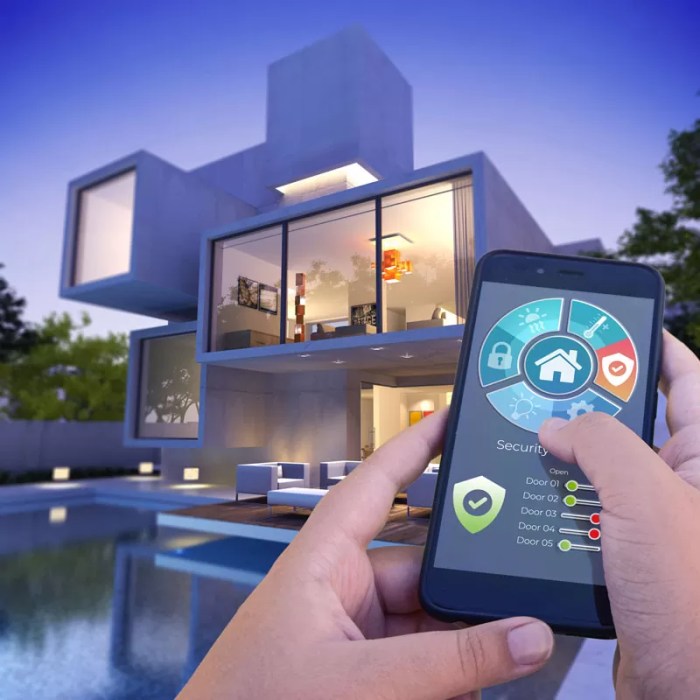
Smart home technology brings convenience and connectivity, but it also raises concerns about privacy and security. With devices constantly collecting and transmitting data, the potential for unauthorized access, data breaches, and privacy violations becomes a significant issue.
To address these concerns, it’s essential to understand the risks and take proactive measures to secure smart home networks and devices. This includes using strong passwords, enabling two-factor authentication, keeping software up to date, and implementing network segmentation to isolate critical devices from potential threats.
Encryption and Data Protection
Encryption plays a crucial role in protecting data transmitted between smart home devices and cloud platforms. Look for devices that support industry-standard encryption protocols like AES-256 and TLS. Additionally, consider using a VPN (Virtual Private Network) to encrypt all internet traffic, adding an extra layer of security.
Device Authentication and Authorization
Proper authentication and authorization mechanisms are essential to prevent unauthorized access to smart home devices. Use strong, unique passwords for each device and enable two-factor authentication whenever possible. Additionally, consider implementing role-based access control to restrict access to specific devices or functions based on user roles.
Network Segmentation and Firewalls
Segmenting your smart home network into different subnets can help contain potential security breaches. By isolating critical devices, such as security cameras or smart locks, from other devices on the network, you can minimize the impact of a security incident and prevent it from spreading.
Regular Software Updates
Keeping software up to date is crucial for maintaining the security of smart home devices. Software updates often include security patches that address vulnerabilities and protect against known threats. Make sure to enable automatic updates whenever possible and check for updates regularly.
Physical Security
Physical security measures are also important for protecting smart home devices. Keep devices out of reach of unauthorized individuals and consider using physical security devices like motion sensors or door/window sensors to detect potential intrusions.
Emerging Trends and Technologies
The smart home industry is constantly evolving, and new technologies are emerging to enhance security. These include:
- Artificial Intelligence (AI) and Machine Learning (ML): AI and ML algorithms can be used to detect anomalous behavior and identify potential security threats in real-time.
- Blockchain Technology: Blockchain can provide a secure and transparent way to store and manage smart home data, reducing the risk of unauthorized access.
- Zero-Trust Security: Zero-trust security assumes that all devices and networks are potentially untrustworthy and requires strict authentication and authorization for every access attempt.
Smart Home Design and Aesthetics
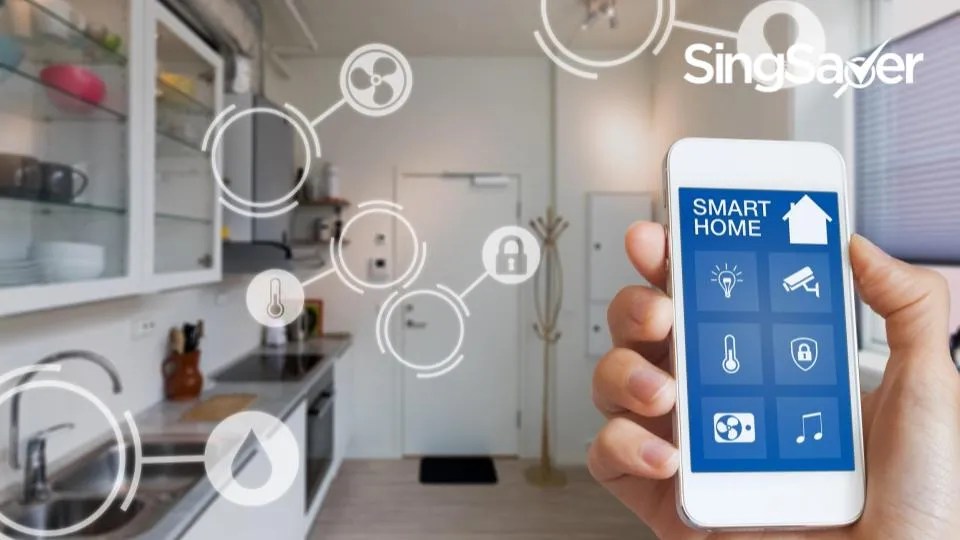
In the realm of smart home technology, design and aesthetics play a pivotal role in shaping the overall user experience. Gone are the days when smart home devices were mere functional tools; today, they are expected to seamlessly blend with the décor and personal style of the homeowner.
The design of smart home systems has evolved significantly over the years, with manufacturers recognizing the importance of aesthetics. From sleek and minimalist designs to more traditional and ornate styles, there is a wide range of options available to suit diverse preferences.
Examples of Seamlessly Blending Devices
Several smart home devices have been meticulously crafted to complement various home décor styles:
- Nest Learning Thermostat: With its sleek circular design and intuitive interface, the Nest Learning Thermostat blends seamlessly with modern and contemporary homes.
- Philips Hue Smart Bulbs: These bulbs come in a variety of colors and styles, allowing homeowners to customize their lighting to match their mood or décor.
- Sonos One Smart Speaker: Featuring a compact and elegant design, the Sonos One Smart Speaker effortlessly integrates into any room, providing high-quality audio without compromising aesthetics.
Importance of User Preferences and Personal Style
When designing a smart home, it is essential to consider the user’s preferences and personal style to ensure the system aligns with their lifestyle and taste:
- Color Schemes: Homeowners can choose smart home devices that match their existing color schemes or opt for neutral tones that blend seamlessly with any décor.
- Form and Function: Some individuals may prefer smart home devices that prioritize functionality over aesthetics, while others may seek a balance between the two.
- Integration with Existing Décor: It is crucial to consider how smart home devices will integrate with existing furniture, artwork, and other décor elements.
Cost Considerations and Budget Planning
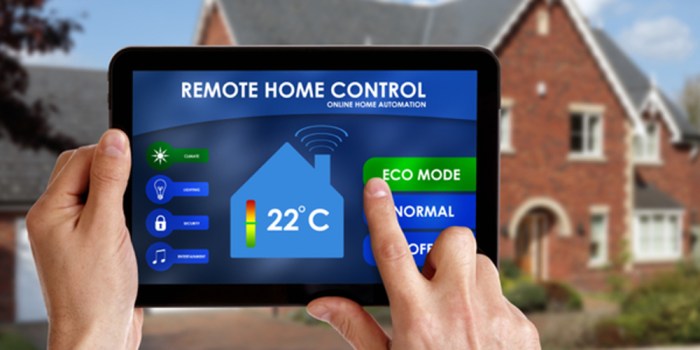
Smart home systems offer a blend of convenience, efficiency, and enhanced living experiences. However, implementing a smart home setup can involve upfront costs, ongoing expenses, and potential savings. This section explores the financial aspects of smart home technology, providing insights into cost factors, budgeting strategies, and potential returns on investment.
Cost Factors Associated with Smart Home Systems:
- Initial Investment: Acquiring smart devices, including smart speakers, thermostats, lights, and security systems, can be a significant initial expense. The cost varies based on the type, brand, and features of each device.
- Installation and Setup: Some smart devices may require professional installation, adding to the overall cost. However, many devices are designed for DIY installation, potentially saving on installation expenses.
- Ongoing Expenses: Smart home systems often involve ongoing costs such as electricity consumption, subscription fees for cloud services, and maintenance expenses.
- Compatibility and Integration: Integrating devices from different brands or ecosystems may require additional costs for compatible hubs or bridges.
Strategies for Budgeting and Prioritizing Smart Home Purchases:
- Set Clear Goals and Priorities: Determine the primary objectives for your smart home system, whether it’s energy efficiency, enhanced security, or convenience. Prioritize purchases that align with these goals.
- Phased Approach: Implement the smart home system in phases, starting with essential devices and gradually adding more as your budget allows.
- Research and Compare: Compare prices from different retailers and online marketplaces to find the best deals on smart devices.
- Consider Bundles and Packages: Some retailers offer bundles or packages that include multiple smart devices at a discounted price.
- DIY Installation: If feasible, opt for DIY installation to save on professional installation costs.
Potential Return on Investment and Long-Term Savings:
- Energy Savings: Smart thermostats and lighting systems can help optimize energy consumption, leading to potential savings on utility bills.
- Enhanced Security: Smart security systems can provide peace of mind and potentially reduce the risk of break-ins, potentially leading to lower insurance premiums.
- Convenience and Automation: Smart home systems can automate routine tasks, freeing up time and enhancing convenience. This can indirectly contribute to productivity and overall well-being.
Future Trends and Innovations
The smart home industry is continuously evolving, driven by advancements in technology and changing consumer preferences. Several emerging trends and innovations are shaping the future of smart home technology, offering new possibilities and enhancing the user experience.
Artificial Intelligence and Machine Learning
Artificial intelligence (AI) and machine learning (ML) are playing a pivotal role in transforming the smart home landscape. AI-powered devices can analyze data, learn user patterns, and make autonomous decisions to optimize home automation, energy efficiency, and security. ML algorithms enable smart devices to adapt and improve their performance over time, providing a more personalized and intuitive user experience.
Internet of Things (IoT) and Connectivity
The Internet of Things (IoT) continues to expand, connecting various devices and appliances within the smart home ecosystem. The proliferation of IoT devices, ranging from smart thermostats to intelligent lighting systems, enables seamless communication and control, creating a truly interconnected and responsive home environment.
Voice Control and Natural Language Processing
Voice control and natural language processing (NLP) technologies are revolutionizing the way users interact with their smart homes. Virtual assistants, such as Amazon Alexa, Google Assistant, and Apple Siri, allow users to control devices, access information, and perform various tasks using voice commands, providing a hands-free and intuitive user experience.
Home Energy Management and Sustainability
Sustainability and energy efficiency are becoming increasingly important in the smart home industry. Smart home systems can monitor and optimize energy consumption, reduce carbon footprint, and integrate renewable energy sources. Homeowners can gain insights into their energy usage and make informed decisions to conserve energy and lower their utility bills.
Health and Wellness Integration
Smart homes are increasingly incorporating health and wellness features. Wearable devices, fitness trackers, and smart healthcare devices can be integrated with the smart home ecosystem, enabling personalized health monitoring, medication management, and remote patient care. This integration promotes proactive healthcare and enhances the overall well-being of individuals.
Security and Privacy Enhancements
Security and privacy remain paramount concerns in the smart home domain. Advanced encryption algorithms, two-factor authentication, and biometric recognition technologies are being implemented to safeguard user data and protect against cyber threats. Additionally, smart homes are becoming more proactive in detecting and responding to security breaches, providing peace of mind to homeowners.
Summary
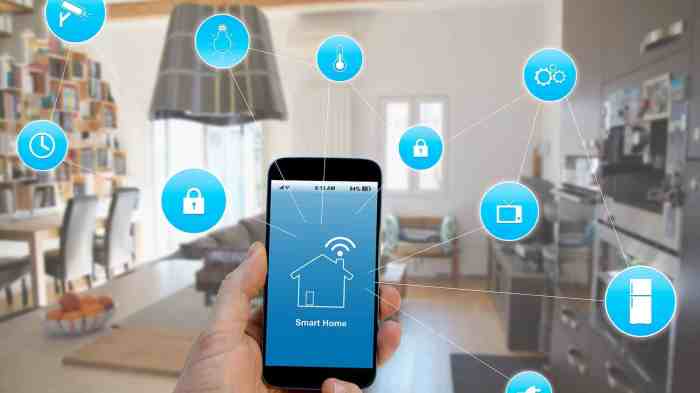
As the smart home landscape continues to evolve, Reddit remains a vibrant hub for homeowners and tech enthusiasts to connect, share experiences, and explore the boundless possibilities of home automation. Whether you’re a seasoned smart home aficionado or just starting your journey into this exciting realm, Reddit offers an invaluable platform to learn, contribute, and create the smart home of your dreams.
FAQs
Q: What are the most popular smart home devices discussed on Reddit?
A: Redditors frequently discuss various smart home devices, including smart speakers, smart thermostats, smart lighting systems, smart security cameras, and smart door locks.
Q: What are some common challenges faced by smart home users?
A: Common challenges include device compatibility issues, difficulty with setup and configuration, concerns about privacy and security, and the need for a stable internet connection.
Q: How can I ensure the security of my smart home system?
A: To enhance security, consider using strong passwords, enabling two-factor authentication, keeping devices and software updated, and investing in a robust home network security system.
Q: How can I design a smart home that complements my personal style and preferences?
A: To create a cohesive and personalized smart home, consider choosing devices that blend seamlessly with your home décor, customizing settings to suit your lifestyle, and incorporating smart home elements that reflect your unique tastes and preferences.